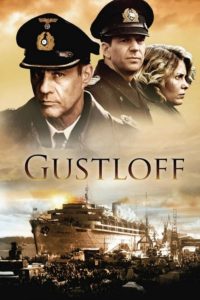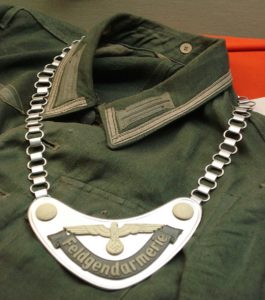Die Gustloff (2008) – Slow but poignant
All clickable links in red
 Director: Joseph Vilsmaer
Director: Joseph Vilsmaer
Genre: Drama – WW2 True Story
Language : German
Time: 1 Hour 41 minutes
Platform: You Tube Free – with hard coded English subtitles
Cast: Kai Wiesinger. Valeri Niehaus. Heiner Lauterbach.
Which was the world’s biggest maritime disaster? With three movies on this topic, it has to be the Titanic. Right?
NO

The world’s greatest maritime disaster EVER was the sinking of the German cruise ship Willem Gustloff on January 31, 1945 , off the coast of modern day Poland.
So why isn’t this disaster as well known as others? Simple. It happened at the fag end of the European part of World War 2 . The revelations of the death camps in Eastern and Western Europe also surpassed it. The infamous Auschwitz camp was liberated by the Russians on January 27, 1945 and the ongoing revelations of organised systematic exterminations in Auschwitz-Birkenau soon overshadowed this disaster. When the news filtered out, some even had nasty views of “they deserved it” and so on.
The Willem Gustloff tragedy was yet another case of many events conspiring together to deliver a tragedy of multiple proportions. Simply put, a cruise ship with a capacity of 1000 passengers was overloaded to the gills with a mix of civilians and injured soldiers, totaling 10,000. Warnings of Soviet submarines on prowl were ignored. Escorts were unavailable. So was air cover, since the German air force was crippled during this stage of the war, with fuel scarcity and a lack of experienced airmen making it practically impossible to provide air cover for an evacuation. Moreover, it was wrongly thought, that the deteriorating weather would “cover” the ship’s passage. A Soviet submarine on patrol fired three torpedoes at the Gustloff, resulting in immediate disaster. The ship sank in 20 minutes, taking with it the many civilians and injured soldiers trapped deep inside the ship’s lower decks.
About 9500 people died, making it the greatest maritime tragedy, in civilian or military terms.
After (and despite) the disaster, the evacuation from East Prussia continued unabated, and about one million soldiers and civilians were evacuated to mainland Germany.
So, does the film live up to the expectations in showing the disaster ? Yes and No. Somewhere the film makers have decided to show a love story against the backdrop of the disaster and that takes away from the intensity or magnitude of the disaster. No need to say where the inspiration comes from! The “love story” detracts from the overall movie – otherwise its well made and scripted.
The standard stereotypes of late 20th century German war movies emerge. The “decent” “non Nazi” captain Helmuth Kehding (Kai Wiesinger) who lends his cabin to refugee women, one of whom is pregnant. The foaming at the mouth “Nazi Captain” Petri (Karl Markovics) who overrides everyone and believes in the ultimate victory, even with the Russians at the doorsteps of Gotenhafen (modern Gdynia in Poland) from where they are evacuating. The “fanatic Nazi Party member” and nurses who celebrate the birthday of Willem Gustloff, the Swiss German Nazi after whom the ship was named and ironically sunk a day after Gustloff’s birthday January 30. The “decent” “non Nazi” female auxiliary Erika Galetschky (Valerie Niehaus) who sneaks the pregnant woman on board and who is in love with Helmuth. Erika’s fanatical superior. The mysterious radio operator Koch, who is Erika’s cousin and who is even ready to take on an officer, a strict no-no in the disciplined Armed forces hierarchy. The suffering civilians.
Once on board, Harald and his superiors argue . Petri the Nazi is convinced no Russian vessel or plane will venture out in such dreadful weather of sleet and rain, and orders the navigation lights to be switched on, providing a beacon for the roving Soviet submarine which doesn’t hesitate to sink this juicy target. By the time the error is corrected, it is too late and the first torpedo has already slammed in.
The narrative seamlessly integrates all these elements, generating a pervasive feeling of impending disaster. The story telling is linear. It is revealed in the end that Koch the radio operator was a Russian agent and he had guided the Russian submarine onto the ship. Nothing explicit but it’s implied so. Which is a new angle on the sinking – a conspiracy theory. Overall all the characters are composite sketches, which too is fine.
Since it is a German production, it is only logical that the hero and heroine cannot be Nazis or at least must remain neutral. Erika says “we will have to pay back for our actions multi-fold”. The plight of the civilians is focused through the two women : one who is pregnant and about to deliver. The other who has hidden her 13-year-old boy and passing him off as a girl.

A tiny but important point. At this stage of the war, Germany was running out of able-bodied men. So a new rule drafted, anyone from 14 to 50 years of age , resulting in children and old men being ruthlessly rounded up . This is shown in the way the military police , the Feldgendarmerie known derisively as ‘kettenhund’ (meaning Watchdog) with the metallic gorgets around their neck (pic on left), rounding up boys from the survivors of the sinking and putting them on a truck towards the front line.
Thankfully the actual sinking is covered only in one brief scene and the general confusion is shown well. The special effects are decent .
In sum, the world’s greatest maritime tragedy EVER is brought to screen decently.
The film is a two part TV film (also on You Tube) but you are better off with the edited single part version on You Tube as below
Single part edited version of one hour and forty minutes
PS: Erika and Helmuth live happily ever after 😊
For anyone interested in the list of the greatest 20th century maritime disasters, here’s an excellent wiki link. The link covers both civil and wartime disasters and we can see that Gustloff disaster tops the list from both angles.
Real history/ Historical background – 4 out of 5
Script – 4 out of 5
Story – 4 out of 5
Direction – 4 out of 5
Photography – 4 out of 5
Total – 4 out of 5
PPS: There is one more film on the Gustfloff tragedy made in black and white in 1960 . nacht fiel über gotenhafen is also free on You Tube